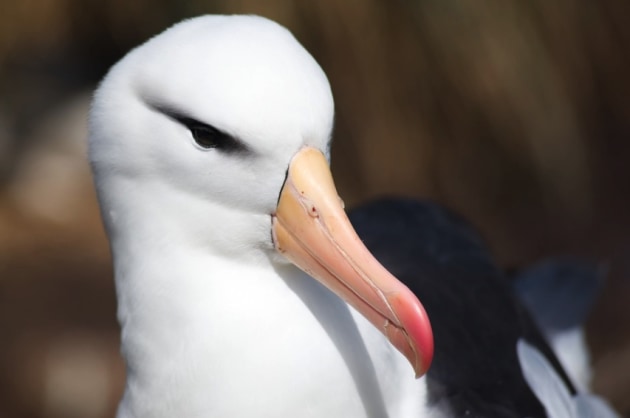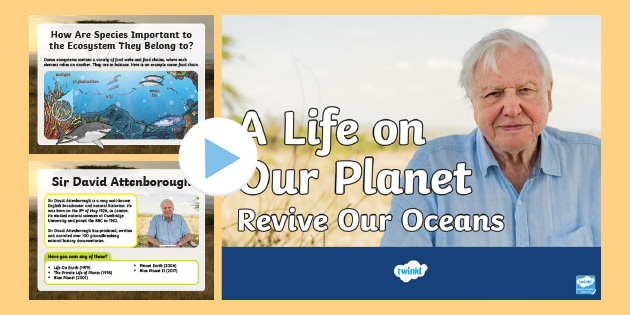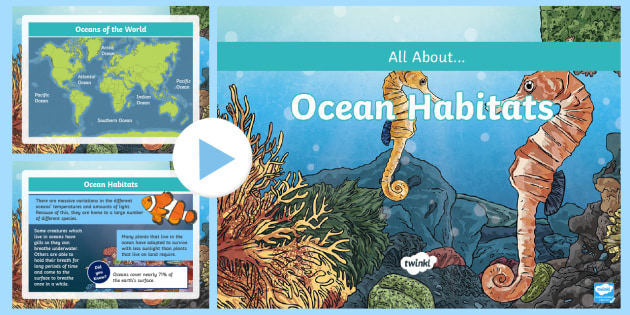

Discover amazing facts about the albatross with this delightful teaching wiki. Learn all about the albatross’s habitat, diet, behaviour and breeding.
The albatross is one of the world’s largest flying seabirds. It comes from the Diomedeidae family which is said to contain 22 different species. The albatross has a large body with mostly white feathers. It can have some black and grey colour variation. Its beak is long and orange or yellow in colour.

The most distinct feature of the albatross is it’s enormous wingspan. The albatross uses its huge wingspan to glide above the ocean for hours at a time without flapping its wings! Albatross wings have an arch shape and appear stiff. This is because they rarely need to flap. This shape makes the albatross reliant on the wind and it also means that they do not use up much energy whilst in flight. The albatross is also able to float on water where it is more vulnerable to predators.
Despite its impressive wings, the albatross weighs roughly the same as a swan - about 10 kilograms.
There are many species of albatross and they all have one habitat in common. The main albatross habitat is of course - the sea. The albatross spends most of its day soaring above the ocean and an albatross can cover hundreds of miles everyday.
The albatross’s habitat is wide ranging and covers the Southern and North Pacific oceans. The majority of albatrosses inhabit the south but there are some species in the north.
The Wandering Albatross is one of the best known, largest and most studied of the albatross species. Its enormous wingspan is the widest of all living birds.
Like all albatrosses, the Wandering Albatross's habitat is mostly in the sky! As its name suggests, the Wandering Albatross travels enormous distances. They are said to circumnavigate the Southern Ocean up to three times per year!
The Wandering Albatross’s habitat covers specific locations across the Southern Oceans.
They spend most of their life in the air, so these are the places where they choose to breed and feed:
To find out more about the ocean habitat, why not take a look at our Ocean Habitat wiki page? Or if you need lesson materials, what about this beautifully illustrated PowerPoint about Ocean Habitats?

An albatross spends most of its life at sea and only visits land to breed. They nest in large colonies on remote islands. Instinctively, albatrosses return to the place where they themselves were hatched to nest. Female albatrosses lay a single egg in a small dip in the ground. Both parents take turns to care for the egg. At three to ten months old, young albatrosses are ready to fly. They don’t return to land again for a further five to ten years.
Albatrosses dive from the sea’s surface to catch schooling fish, squid and krill. Most species feed in the deeper parts of the ocean. However like seagulls, they sometimes follow fishing boats in the hope of getting fed. Like some other sea birds, they’re also able to drink salt water.
All 22 species of albatross are listed as being in danger of extinction, with some species identified as critically endangered. In the past, certain species were hunted by humans for their feathers which were used in the manufacturing of down and hats. Also in the past, the albatross formed part of both the Eskimo and Aleut diets.
More recent threats include plastic pollution from litter, offshore dumping and river waste which the albatross accidentally ingests. This can affect their body weight by causing an obstruction. The albatross is also vulnerable at breeding time from small mammals which may disturb the nest.
If you looking to teach children about conserving our ocean habitats you might be interested in this fascinating PowerPoint:
If you’re teaching pupils about seabirds and their ocean habitats you might be interested in our fantastic range of related resources.
You’re sure to find some creative ideas for engaging young learners including:
 Home
Home  Membership
Membership  Customer Support
Customer Support  Create
Create  Blog
Blog 






















